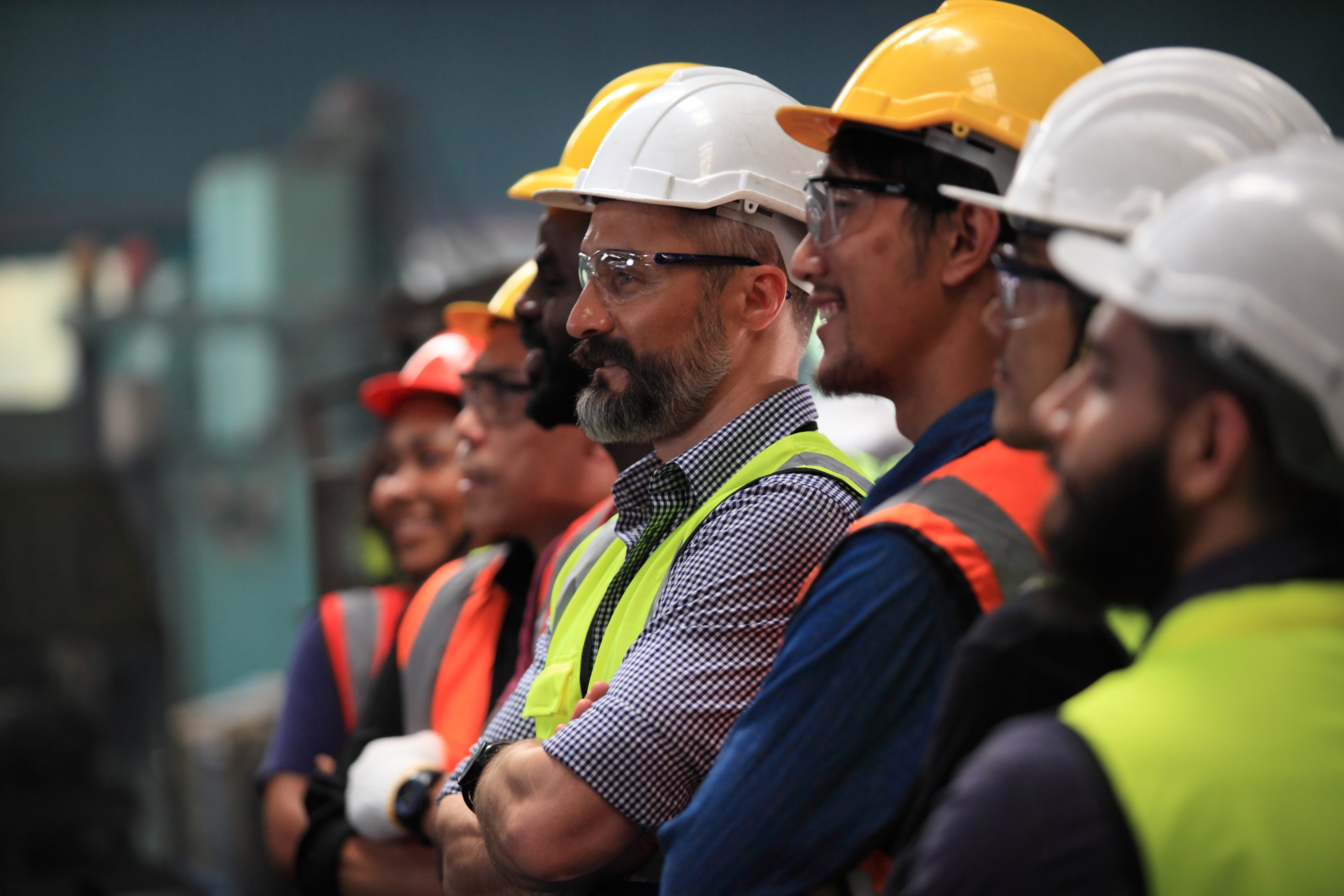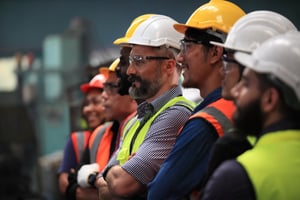If you're getting caught in disputes—or even just the thought of where disputes could lead is keeping you up at night, we created this article to help.
You might have tried the typical advice of fostering regular communication and having clear contracts, yet you're still dealing with one or more of the following types of disputes:
-
Change in Scope: Project scope changes that lead to delays, increased project costs and disagreements over responsibility for the changes. We know how frustrating and demanding this can be.
-
Design issues: Incorrect or incomplete design that triggers disputes over work quality and discrepancies between specifications and deliverables.
-
Delays and schedule disruptions: Construction project delays that lead to increased costs, contractual disputes over damages or time extensions and impacts on project profitability. You may also be facing claims for financial compensation as a result of the project timeline going off track.
-
Payment Issues: Payment disputes that put a strain on the relationship between you and your project partners, cause delays in project progress, and even lead to claims for non-payment or breach of contract. This can be a real headache to deal with.
-
Work Quality Issues: When completed work doesn't meet the agreed specifications, it can set off a chain reaction involving rework, additional costs, and project completion delays.
-
Safety Issues: As you know, safety incidents can have severe consequences, such as injuries, property damage, delays, and potential legal actions or fines.
Unfortunately, disputes are an inherent part of the industry and are often seen as just a cost of doing business—but they don't have to be.
After working on hundreds of construction projects, we've discovered that by incorporating four key principles, you can reduce the number and severity of disputes that arise during your project.
We've called this strategy the "4 Pillars of Harmony" and in this article, we share exactly what it is and how you can use it in your projects to avoid disputes.

Using the "4 Pillars of Harmony" to avoid construction disputes
Step 1: Agree on all work beforehand
You may be thinking, “But we always have a plan right from the start”. All good, right? Well, not exactly.
Without a clearly defined sequence of works that both you, your specialists and client agree on in writing, you risk disputes down the line.
Ambiguity in contracts and poorly defined sequences of works create friction, which can lead to disputes when things don’t go as expected.
Here's what you can do to make sure everyone is on the same page from the start of your project:
Promote transparent communication at the contract stage
I get it - It’s easier to agree to work at the contracts stage without a clear view of whether or not you’ll actually be able to fulfil this, but in the long run, it’s not worth it.
Be clear from the beginning. Engage with clients to discuss and agree upon the planned sequence of works. Share design drawings, work methods, and expectations to openly align everyone involved.
Consult your specialists
As a senior manager, initiate honest conversations with subcontractors to leverage their expertise and understand what they think is the best sequence of works to follow. Address any queries or concerns before work commences to minimise issues during the construction phase.
Define your building sequences
Agreeing on a fit-out process in advance can be a game-changer when it comes to avoiding disputes. Having a predefined construction process, from the very first activity to project completion provides clarity. It helps you to know who will be doing what work, when and in what kind of sequence to facilitate smooth handovers, error-free work.
Define everything from design requirements, quality measures, the flow of trades and more to make sure nothing is left to chance.
Carry out a mini mock project
Create a show apartment or area as a 'mock project' to solidify the agreed-upon sequence. Once established, stick to the plan as much as you can - even in the face of unexpected challenges.
Standardise your processes
Set up clear and standardized processes, then replicate them across your project. This not only stops issues from occurring again but also lets you figure out why things might be going off track in your project—getting to the root issues. Plus, it helps you do more of what works and less of what doesn't, to make it easier to scale your success.
Sablono's easy-to-use Workflow Templates allow you to outline highly-granular sequences for all different types of work packages. You can map out and agree on all aspects of your project using a single digital system.
Define the flow of trades, responsibilities and sign-offs, add hold points and QA checksheets (ITPs, WIR) and more. Then, capture this all in reusable templates.
Step 2: Update progress in real-time
Regular updates on the construction progress can prevent disputes from occurring entirely. Here's how:
-
Enhanced Communication: Up-to-date data on project progress, stakeholders can communicate more efficiently and address any concerns or issues before they escalate.
-
Early Issue Detection: By monitoring key performance indicators and metrics in real-time, project teams can quickly address issues, implement corrective measures, and prevent them from snowballing into larger disputes.
-
Transparency and Accountability: Real-time data promotes transparency, this fosters trust and enables early identification of any discrepancies.
-
Dispute Resolution Support: If disputes do arise, real-time data can provide valuable insights and evidence to support the resolution process. Accurate and up-to-date data can help parties involved in the dispute reach a fair and informed resolution.
Sablono Activity Tracker for real-time progress updates
When it comes to avoiding construction disputes, Sablono helps you stay one step ahead.
Sablono's Activity Tracker provides real-time progress updates that ensure you always have the most accurate and current information at your fingertips.
Here's how it can help:
.png?width=2400&height=1600&name=Fear%20%2B%20Curiosity%20(1).png)
Collaborate in-the-moment
Activity Tracker allows you to easily collaborate with subcontractors, project partners, and your management team in real-time.
Use the Sablono app to report progress and quality, and flag issues. Trades can report work in-the-moment while on-site straight from their mobile and Management receive real-time updates and insights—and is instantly notified of any issues.
Attach supporting documents directly to activities
Need your team to attach compliance information? With Sablono they'll see the requested specifications clearly attached to their activities.
Attach supporting documents, photos, notes and QA checklists directly to your activities for an added layer of transparency and accountability.
This means you can prevent disputes from arising and quickly resolve any concerns or challenges that may arise.
Connect your site
Everything is connected in Sablono which means you can see the ripple effect of one change or update on other parts of your project.
Is a trade working out of sequence? You'll know by simply checking your Sablono dashboard.
An issue caused a delay? Sablono's Planned vs Actual dashboard will show you how you're performing against your plan so that you know what you'll need to do to stay on track.
With this overview, you can proactively address any potential issues before they become major roadblocks to avoid disputes altogether.
Step 3: Create a ‘digital audit trail’ of everything that happens on-site
When it comes to construction disputes, relying on "he said, she said" won't cut it - only undisputable evidence matters. That's why recording everything that happens on-site in chronological order is critical.
At Sablono, we call this a "digital audit trail". This provides you with a digital record of everything that happens on your project your site data down to the smallest details - from supporting photos as evidence of quality standards being met, to confirmation that a particular trade completed work and the sign-off by management.
Using Sablono Activity Timeline for undisputed evidence
Need to go back in time to understand exactly what happened? Sablono Activity Timeline provides a single source of truth with an undisputable digital audit trail that automatically stores all work and activities that are carried out in your project.
This provides you with a complete and easily accessible record of everything that happens on-site. From status changes and the people responsible to attached QA checklists, notes, and reported issues – every detail is documented.
You can view:
-
When the status was changed and by whom
-
QA Checklists attached to the activity
-
Notes and Issues that were reported
-
All planned and actual dates at a glance
This level of clarity and accountability makes it easy to understand the complete history of "who did what and when" for all your construction activities.
You can also use Activity Timeline to:
1. Simplify weekly team meetings and minimise conflicts
The Activity Timeline also works wonders during your weekly team meetings. Can't agree on the status of a certain area?
Simply display the Activity Timeline on a large screen, click your into an activity or task and effortlessly review the entire activity history. This helps strengthen accountability across your team.
2. Mitigate against claims with objective answers to the questions that matter
By leveraging Sablono's Activity Update Timeline, you significantly reduce the chances of disputes and claims.
With a reliable source of truth that shows exactly what happened, you can easily address questions like "When did the team start working on it?", "Were there any obstacles causing the delay we're seeing?", or "Who performed the final check and gave the green light?".
This digital audit trail is created automatically with every update and runs for decades so you always have access to the evidence you need - even once the project is finished.
Step 4: Use automated payment valuation to pay on time
It's no surprise that late payments are one of the biggest causes of disputes.
Traditional payment valuation methods are complex and time-consuming, involving manual calculations and lots of coordination between different parties. Automated payment valuation brings a solution to this problem.
Automated payment valuation in construction uses technology to streamline and automate the process of calculating and determining payment amounts for subcontractors.
Some of the benefits of taking this approach in your claims avoidance strategy include:
-
It improves the speed and accuracy of payments
-
It reduces the chances of disputes and claims
-
It simplifies the commercial valuation process
-
It provides transparency and accountability.
By automating the payment valuation process, you'll ensure that subcontractors are paid accurately and on time to reduce the chance of disputes and claims.
Using Sablono's Commercial Valuation to automate payment valuation
With Sablono's Automated Payment Valuation, you can easily link costs to specific activities and workflows to display how much each subcontractor needs to be paid based on their reported progress in the Sablono app.
This not only ensures accurate payments every time but also dramatically reduces the effort for payment applications. Plus, by streamlining the payment process, you'll have peace of mind knowing that disputes about payment discrepancies are a thing of the past.
Conclusion: How to avoid disputes in construction
In conclusion, construction disputes are inevitable, but they don't have to be a constant source of frustration and stress.
By following the Four Pillars of Harmony - agreeing on all work beforehand, updating progress in real-time, creating a digital audit trail of everything that happens on-site, and using automated payment valuation to pay on time - you can minimise the number and severity of disputes that arise during your project.
With these pillars in mind, Sablono helps you avoid construction disputes and work smarter.


